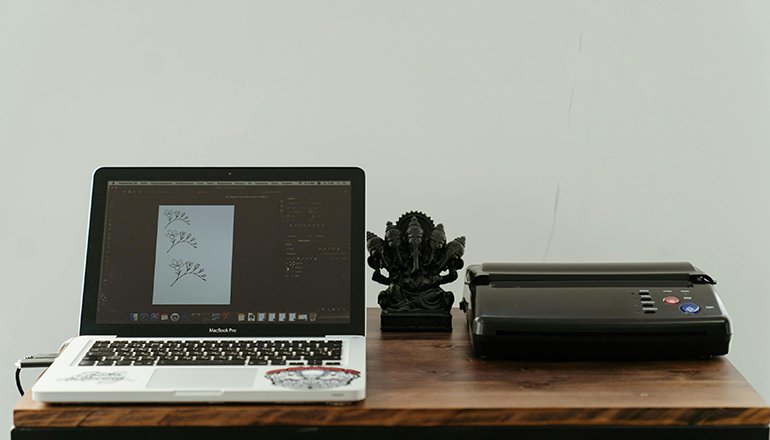
how to connect printer to laptop
In the digital age, being able to connect a printer to a laptop is an important capability. Knowing how to set up and connect your laptop can greatly increase your productivity, whether you’re working from home, in an office, or as a student who needs paper copies of assignments. This tutorial will walk you through the entire procedure step-by-step, making it simple and easy for people with different levels of technical expertise.
Having a device attached to your laptop guarantees that you can make hard copies as needed in the modern world, where digital documents are the norm. The ability to print your work is a useful tool, whether it’s a personal photo, a beautifully designed flyer, or an important business report.
You will find detailed instructions and tips on how to connect your device to your laptop in this tutorial. We can help you whether you have a traditional wired device or a wireless one that connects via Wi-Fi. Our aim is to streamline the process and eliminate any potential hurdles or doubts you may have while setting up this important piece of hardware.
By the time you finish reading this article, you will have the knowledge and confidence to connect your device to your laptop. With this unique capability, you’ll be able to easily convert your digital efforts into physical, printed documents. Together, let’s make sure your laptop and computer work flawlessly so you can easily and efficiently translate your digital ideas to paper.
Connecting your printer to the laptop via a wired USB cable
Using the included USB cable to connect a printer to your laptop is like putting together a jigsaw puzzle. While it may seem complicated at first, each step adds to the result. Even if you’re not a techie, you can hook up your machine and computer with ease thanks to this complete guide, which will walk you through the entire process step-by-step. We’re going to make these two best friends, so go ahead and grab that USB cable.
Step 1: Access your Windows settings.
Think of your laptop settings as the command center of your virtual world. To get started, look for the Windows icon in the bottom left corner of your screen. It opens the doors to your digital domain and acts as its gateway.
When you click on it, the start menu will appear beautifully. Your ticket to the settings circle is the gear-shaped icon located just below the left column. To continue, click on it.
Step 2: Go to Devices.
There are many options to explore in the fascinating realm of Windows Settings. Nevertheless, let’s focus on our mission of connecting your machine for now. Find the “Devices” icon in the top row of your Windows settings. The magic begins at this point. Click on it, and a new window will pop up beautifully.
A list of alternatives will now appear in the left column of the window. The “Printers and Scanners” reader is where you should go next. Click on it.
On this screen, there is an attractive option that says “Add a printer or scanner.” It’s like a gateway to a whole new journey. Feel free to choose it. Your laptop is ready to help you along the way.
Step 3: Connect your printer.
When you select “Add a printer or scanner,” your laptop turns into a spy deployed there. It starts looking for your printer, which should sit patiently and connect to that trusty USB cord.
Your device name should appear on the screen as soon as you find it. It’s as if your computer screamed, “Voilà!” After clicking on the device name, your computer will take over. Like your own tech-savvy mentor, it will walk you through the installation process step-by-step.
There you have it, you’re done! Now that your machine is connected, it can produce stunning, solid pages whenever you need them.
Keep in mind that setting up your device doesn’t have to be a difficult technical task. By following these simple steps, you can quickly connect your machine to your computer and get it working properly so you can start printing your digital creations. Enjoy your printing adventure and the convenience of having a reliable device by your side.
Connecting your printer to a laptop with a wireless network
It may seem difficult for your printing machine to go from a wired to a wireless connection, but don’t worry. In this article, we will walk you through a surprisingly simple procedure to enable wireless network communication between your computer and device. Say goodbye to tangled cords and welcome the convenience of wireless printing.
Step 1: Find out your settings.
Before exploring Wireless Paradise, make sure your device is turned on and ready for configuration. After fixing that, it’s time to link your device to your home Wi-Fi network. Depending on your printer’s manufacturer, the exact procedure may be slightly different, but don’t worry—we’re here to help.
The LCD panel seen on most modern devices shows the available Wi-Fi networks. This screen contains settings navigation options, including the important “Wireless LAN Settings.”
Step 2: Link your Wi-Fi network.
Now let’s find the Service Set Identifier, or SSID, for your home network. In essence, this is the name of your Wi-Fi network. Hovering your mouse pointer over the Wi-Fi icon in the lower right corner of your computer’s taskbar will reveal your SSID. Alternatively, it is usually printed on a label on the side or bottom of the router that your ISP belongs to.
Step 3: Complete the connectivity.
Now that you’ve determined your SSID, it’s time to connect. This involves entering your device’s network password. Once it’s finished, your device is primed and ready for all your printing needs.
Step 4: Find out your printer settings.
Let’s now check if your computer can detect this wireless device.
To launch it, simply click on the Windows icon in the lower left corner of your desktop to bring up the Start menu. You can then enter your settings window by finding and clicking the gear-shaped symbol. One of the sections you’ll find in the Settings window is called “Devices.”
Step 5: Establish a connection between the printer and the computer.
On the “Devices” me, nu there is an option called “Add a Printer or Scanner”. Press it. As a result of this activity, your computer will start searching for available printing machines. In the list of devices that are accessible, your device’s name — often made up of the manufacturer’s name and model number — should appear. After selecting your device, click “Add Device” and let your computer complete the automatic setup process. The rest of the steps to remove the wireless configuration will be handled by this. Congratulations! Your printing device is now ready to use the ease of wireless printing to bring your digital jobs to life after you’ve successfully connected them to your wireless network. Embrace the world of hassle-free wireless printing and say goodbye to the limitations of wired connectivity. Now you can easily print to your wireless device from the convenience of your laptop, whether it’s a school assignment, an important report, or a precious snapshot. Take advantage of the flexibility and ease of wireless printing, and watch your productivity soar. Have fun with your printing!
Troubleshooting common printer connectivity issues with laptops
In the world of technology, sporadic malfunctions can interfere with the seamless connection we expect between devices and our computer systems. Here, we look at a few procedures for common problems that arise during device setup.
Device not recognized by your computer:
When older models don’t work flawlessly with your computer’s operating system, compatibility issues can arise. If your Windows PC is unable to recognize your device, start fixing by going to the “Devices” tab in your Windows settings. Next, select “Add Printers & Scanners” to start a new search for compatible devices.
If your device is still unprotected, another message may appear below the “Refresh” button that says, “The device I want is not displayed.” Windows’ built-in troubleshooting tool then works to find connected machines. Once Windows detects it, it will provide the appropriate driver for download to ease the installation process.
Consider visiting your device manufacturer’s website to find out why the connection is shaky if the troubleshooter still can’t connect to it.
Constraints in installing printer software:
Despite its many advantages, the technology can be frustrating, especially when new hardware is added. If your machine does not react to your connection by not starting the program installation, here is a simple solution.
On occasion, the procedure can be accelerated by direct connection. A USB cable should be included with your device, whether wired or wireless. Connect this cable to your computer’s USB port as well as your machine. Your computer should recognize this direct link and start the software installation process.
Make sure you have enabled automatic installations by doing the following if your computer is still not responding.
Step 1: Access your Control Panel.
To find it, search for “Control Panel” next to the Windows Start menu using the Cortana search feature.
Step 2: Find Device Installation Settings.
Use the search bar in the upper-right corner of your Control Panel window to search for “Edit device installation parameters.” A printer icon should appear as a result, allowing you to edit the installation parameters.
Step 3: Update your settings.
When you select “Change device installation settings,” a new window will ask you to choose whether Windows should download realistic icons and driver software for your computer. If you select “Yes”, your installation settings will be optimized and your changes will be saved.
Network-related printing issues:
If your print job still doesn’t work after taking all the necessary precautions, a comprehensive analysis is needed to determine the problem and fix it. The following checklist can help bring everything together:
Proper connection:
Make sure your computer is properly connected, either through a Wi-Fi network for wireless printers or through a USB port for wired printers.
Valid Wi-Fi network:
Check your wireless LAN settings to make sure it’s connected to the Wi-Fi network you’ve chosen for your home. Check the SSID and password on your router, then re-enter your network credentials into the computer if needed.
Proximity Matters:
Closer to the source of the network is often associated with better performance. Consider moving your computer closer to your wireless router or try printing your job closer.
Driver Verification:
Sometimes the downloaded driver gets corrupted and needs to be reinstalled. After removing the current driver from your computer, find and download the latest driver from your manufacturer’s website.
For complete troubleshooting instructions, refer to your user manual if all four checks give positive results but printing problems persist. The handbook may also include technical support contact details in case further assistance is required.
In summary, troubleshooting connection problems requires a method that includes everything from network optimization to machine identification and software installation. You can successfully solve common printer problems by following these steps.
End note
Finally, if done methodically, connecting a device to a laptop can be a simple procedure. You can guarantee a successful connection by following the instructions in this guide and taking into account the specific requirements of your laptop and device.
Make sure the operating system on your computer is compatible with your laptop. To connect, older models may require additional steps or troubleshooting. The software must be installed correctly. Use a direct USB connection or turn on automatic installation in your computer’s settings if the installation is not done automatically by your computer.
For best results, make sure the wireless ones are properly placed near the router and connected to a suitable Wi-Fi network. To avoid problems caused by outdated or corrupted drivers, periodically check the manufacturer’s website for driver updates.
Get help from the manufacturer’s technical support or refer to your printer’s user manual for troubleshooting instructions if you encounter problems during the setup process. By following these procedures and paying attention to the details of your laptop and devices, you can create a reliable connection and enable smooth operation and efficient use of your technology.





